
Florence Indian Mound
The large earthen mound known as the Florence Indian Mound was the heart of a large prehistoric cultural center that dominated this section of the Tennessee River Valley thousands of years ago. An early 1800s map showed the mound as quadrilateralLearn more…

Gulf State Park Sand and Shell Mounds
Gulf State Park holds some of the most endangered archaeological deposits in the State of Alabama. Even though these sites are located within the protected area of the park, rising sea levels and damage caused by severe coastal storms will one day likLearn more…
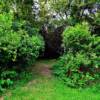
Indian Shell Mound Park
The Dauphin Island Shell Mound is actually two major features – a large shell ridge to the north and a partial shell ring to the south. A small stream fed by a nearby freshwater spring originally flowed through the area between the features and served as an important drinking water source.

Moundville Archaeological Park
Spanning more than 300 acres, Moundville Archaeological Park preserves the largest indigenous mound complex in the Southeast and the remains of a civilization that dominated most of present-day Alabama between AD 1120 and AD 1650.

Oakville Indian Mounds
The mound complex known as the Oakville Indian Mounds was the heart of a large cultural center that dominated this section of the Moulton Valley along Flint Creek and its tributaries from AD 1 to 500 during the Middle Woodland period.
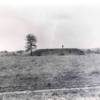
The Bessemer Site
Mound The cluster of mounds known as the Bessemer Site was the largest indigenous mound site in what is now Jefferson County, and it once dominated a large territory in what became north-central Alabama. Occupied from about AD 1150 to 1250 during theLearn more…
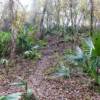
The Bottle Creek Site
The Bottle Creek site is the second largest mound site in Alabama and it represents the remnants of a large Mississippian Stage civic ceremonial complex that dominated the Mobile-Tensaw Delta from AD 1250 to 1500.

The Choccolocco Creek Archaeological Complex
Centered around Boiling Spring, the Choccolocco Creek Archaeological Complex once consisted of at least three earthen mounds, a large stone mound and a large snake effigy (representation), also made of stone.
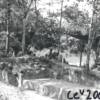
The Coker Ford Site
During the Late Woodland period around AD 700-1100, people living at the confluence of the Chatuga, Coosa, and Little Rivers established one of the largest and most elaborate communities in the region. At the time, populations were on the move and groLearn more…
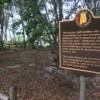
The Fuller Site
Since at least 3,000 BC, the Mobile Tensaw Delta and Mobile Bay teemed with indigenous people moving up and down the waterways and taking overland trails to places far inland where they traded items and ideas. Atop this bluff overlooking both the deltaLearn more…

The Hamilton Mounds Site
The cluster of three mounds known as the Hamilton Mounds site is the largest indigenous mound site in Marion County, Alabama. The site includes three mounds along the left bank of the Buttahatchee River

The Mound at Fort Toulouse – Fort Jackson Park
This earthen mound and the adjacent village were built by people of the Mississippian culture who likely had some relationship to the people associated with the large site of Moundville located about 20 miles south of present-day Tuscaloosa on the Black Warrior River.
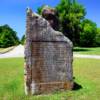
The Mound at Old Cahawba Archaeological Park
Between AD 1500 and 1600, the indigenous inhabitants of the area around the confluence of the Cahaba and Alabama Rivers built a flat-topped mound measuring about ½ acre in size.
